Hello everyone, and welcome to a special Tuesday Product Announcement from us here at SparkFun Electronics! Today, we are pleased to announce our newest Thing Plus Development board, this time featuring the RA6M5 200MHz Arm® Cortex®-M33 module from our friends at Renesas! The SparkFun RA6M5 Thing+ is a high-performance, Qwiic-enabled pocket development board perfect for real-time applications.
Clocking in at 200MHz, the SparkFun RA6M5 Thing+ is a brilliant choice for new and experienced users!
It's time to supercharge your next project with the SparkFun RA6M5 Thing Plus! Clocking in at 200MHz, the RA6M5 is a high-performance microcontroller from Renesas that is perfect for real-time applications. This translates to smooth responsiveness, lightning-fast data processing, and the ability to handle complex calculations – perfect for bringing your creations to life!
The familiar Feather-footprint and Qwiic connector makes it easy to connect the RA6M5 Thing Plus to a wide range of sensors and accessories with a simple plug-and-play approach. Thanks to the 2MB of built-in Flash memory and a convenient microSD card slot, you'll also have ample space for your code and data.
The RA6M5 Thing Plus isn't just powerful; it's versatile, too, because it's built for both ease of use and advanced applications. With 512kB of SRAM, 21 general-purpose pins, and an additional 16MB of Flash memory, it offers the flexibility to tackle even more demanding projects. While the default Arduino core might not utilize every feature, experienced users can explore the microcontroller's full potential to create impressive applications.
Please be aware that while the SparkFun RA6M5 Thing Plus offers some pins that are 5V tolerant, it primarily operates at a 3.3V logic level. The board also features Bluetooth® Low Energy connectivity, thanks to the DA14531MOD module (also from Renesas). When actively transmitting, the DA14531MOD sips a mere 4mA and can operate from a small coin-cell battery. The firmware provided on the module features Renesas' SmartBond™ - CodeLess™ AT command set. Therefore, users only need to send AT commands to configure a Bluetooth connection without reprogramming the module.
In conclusion, the RA6M5 Thing Plus is ideal for makers who crave power and ease of use. Its extensive features and user-friendly design make it the perfect platform to turn your ideas into reality!
Curious how to start? Check out the SparkFun RA6M5 Thing Plus Hookup Guide
Of course this specific version of Thing+ may not be for everyone. We completely understand that! If you are ever curious about our other Thing+ offerings, make sure to check out our Thing+ Information Guide for more information!
That's it for today. As always, we can't wait to see what you make! Shoot us a tweet @sparkfun, or let us know on Instagram, Facebook or LinkedIn. Please be safe out there, be kind to one another! We'll be back with more new products next week so make sure to check back then. Happy hacking!
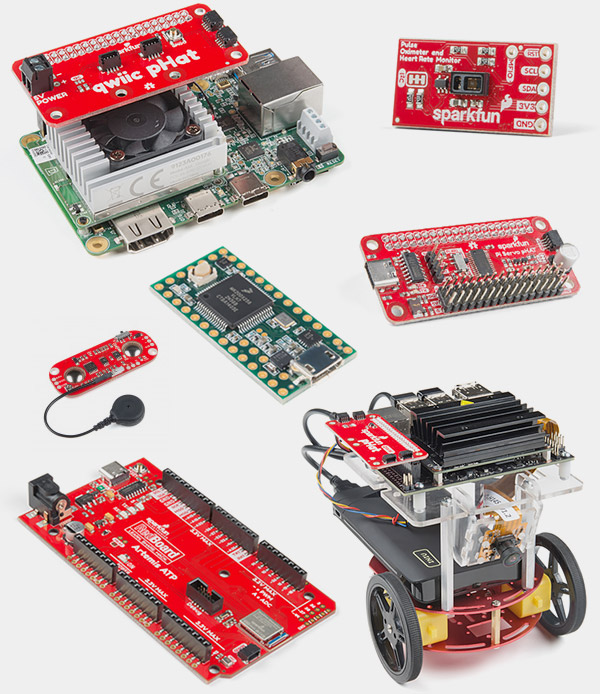
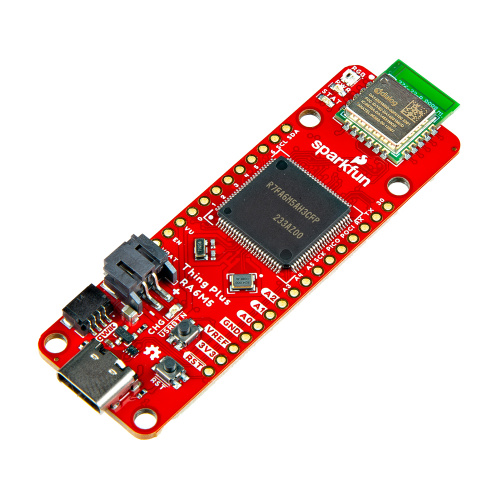
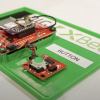
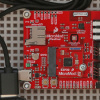
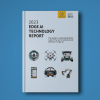
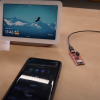






Interesting... it sort of covers one of my "hot buttons", that is having an RTC. In looking at the schematic, I noticed that the "BAT" jumper has a note about cutting it to supply your own battery -- I haven't read through the Renasas datasheet for this processor, but I'm guessing that the "VBAT" pin supplies ONLY the RTC. (Last time I looked at a Renasas datasheet it ran to over 1000 pages...) Also, in the "Getting started" guide, the "BAT" jumper is highlighted in the picture, but is conspicuous by its absence in the text. (I'm suspecting that you can cut this jumper and then solder a thin wire -- like a piece of wirewrap wire -- to one side to provide a connection point for a coin battery.)
I was pleased to see, though, that Renesas has incorporated an ARM processor in this chip. About 10 years ago I was working for a company that used Renesas CPUs, and at that time Renesas had their own proprietary processor, which meant using a Renesas compiler.
One other thought: Although I'm NOT a fan of Python (IM[NS]HO, it has some very serious problems for large projects, though I can see it being "easier" for programs of say, the length of this comment for a beginner), at first glance it looks like this could be enough "oomph" to support CircuitPython.
Not only does VBAT supply the RTC, but there’s also battery-backed RAM onboard too! With the amount of space available on the Thing Plus it was a bit difficult to find room for a battery, but we didn’t want to take away your ability to use that. Glad to know you would appreciate having RTC available onboard, we’ll keep that in mind.
Over the years, I've been pretty vocal about wanting on-board RTCs, with at least the possibility of connecting something like a coin battery to keep it alive. Battery-backed RAM is nice, but having an RTC that can be set to "wake" the CPU is key to a lot of data logging efforts, as well as "event driven" logging of the time.
I also want to praise the clarity of what size the mounting holes are AND making them big enough to be able to use screws/nuts/etc available at the local hardware store, though personally I now have a collection of metric stand-off kits and screws, including M3, M2.5, and M2, all in nylon so they won't interfere with the on-board antenna. (Our friends over at Adafruit use M2.5 and M2 for their Feather line, and although they carry M3 and M2.5 kits, I finally managed to track down an M2 kit over at Newark, but to be quite honest, their service wasn't up to the standards set by SparkFun, Adafruit, and Digi-Key. (Hint, hint...)
One other point: I, for one, would really like to see the (typical) weight of the board mentioned. I've been tinkering for some years with building a payload for a local balloon launch group, and weight is important in such situations.
All in all, it looks like an interesting board, and although I don't have an immediate need for it, I'll certainly keep this praise-worthy design in mind!